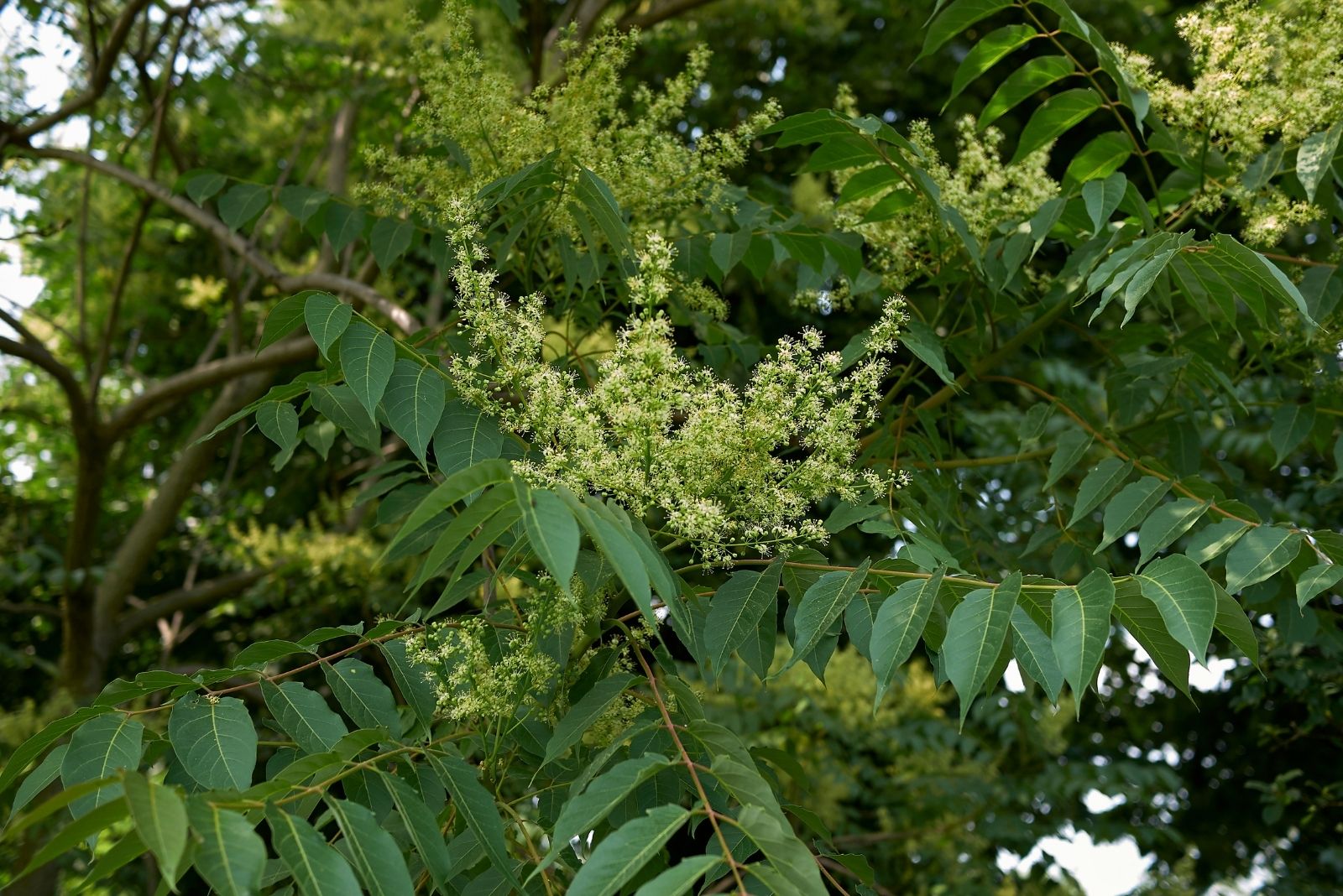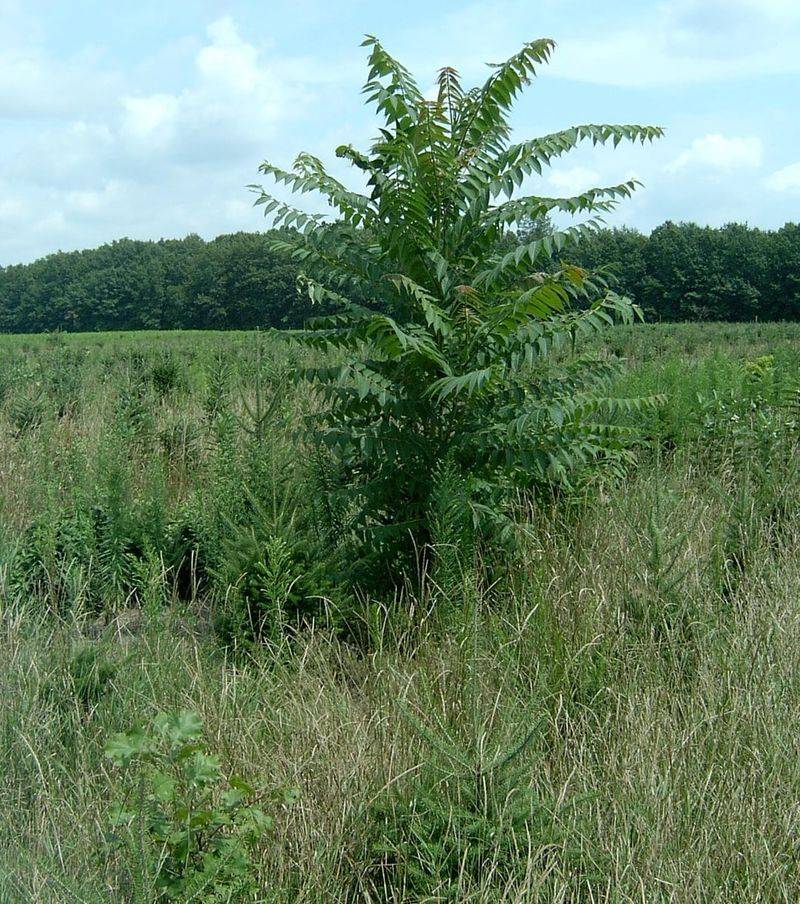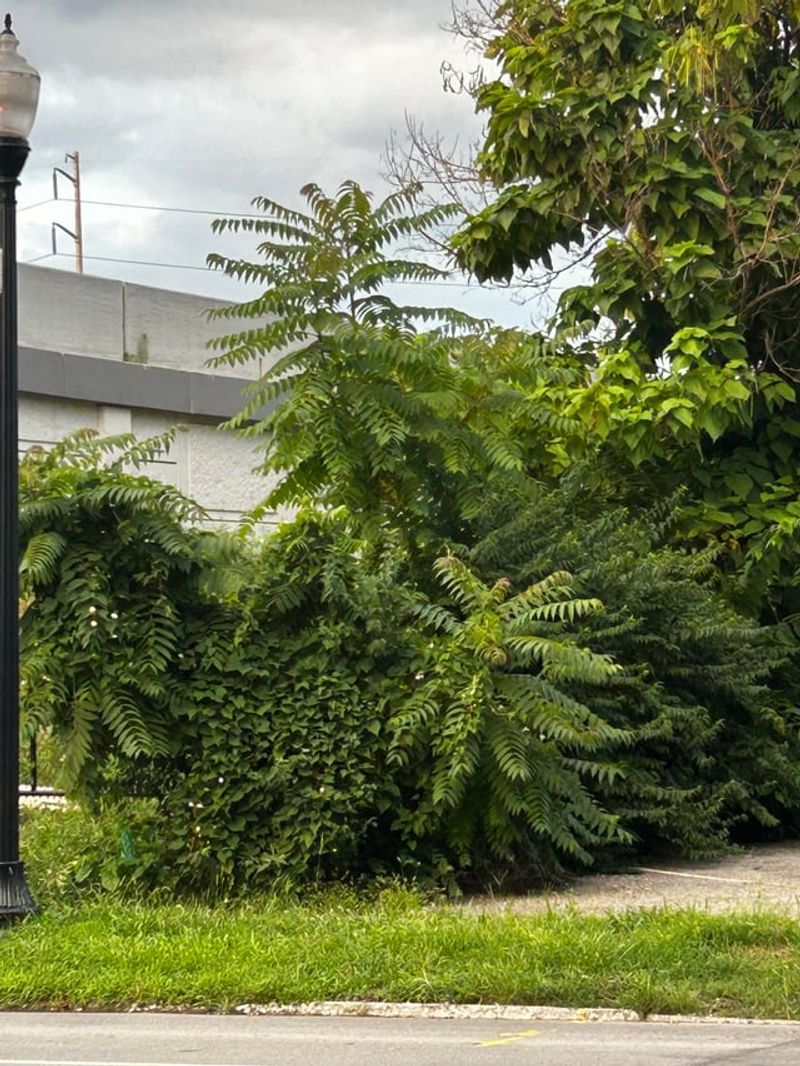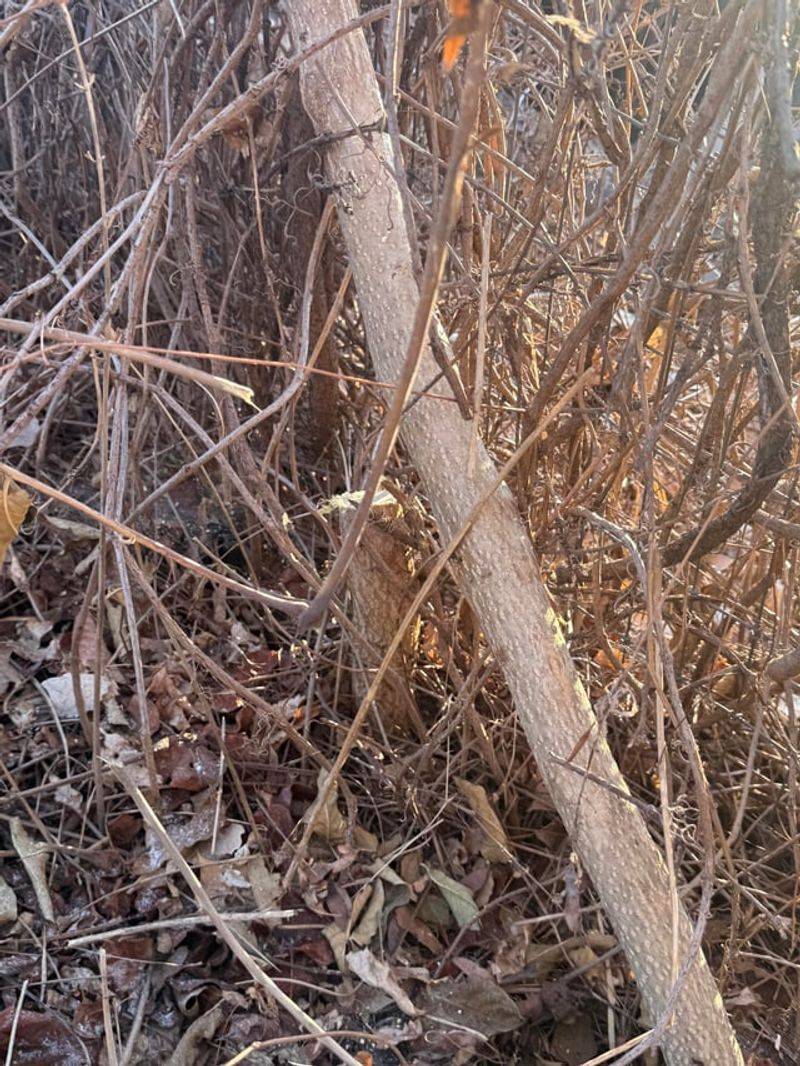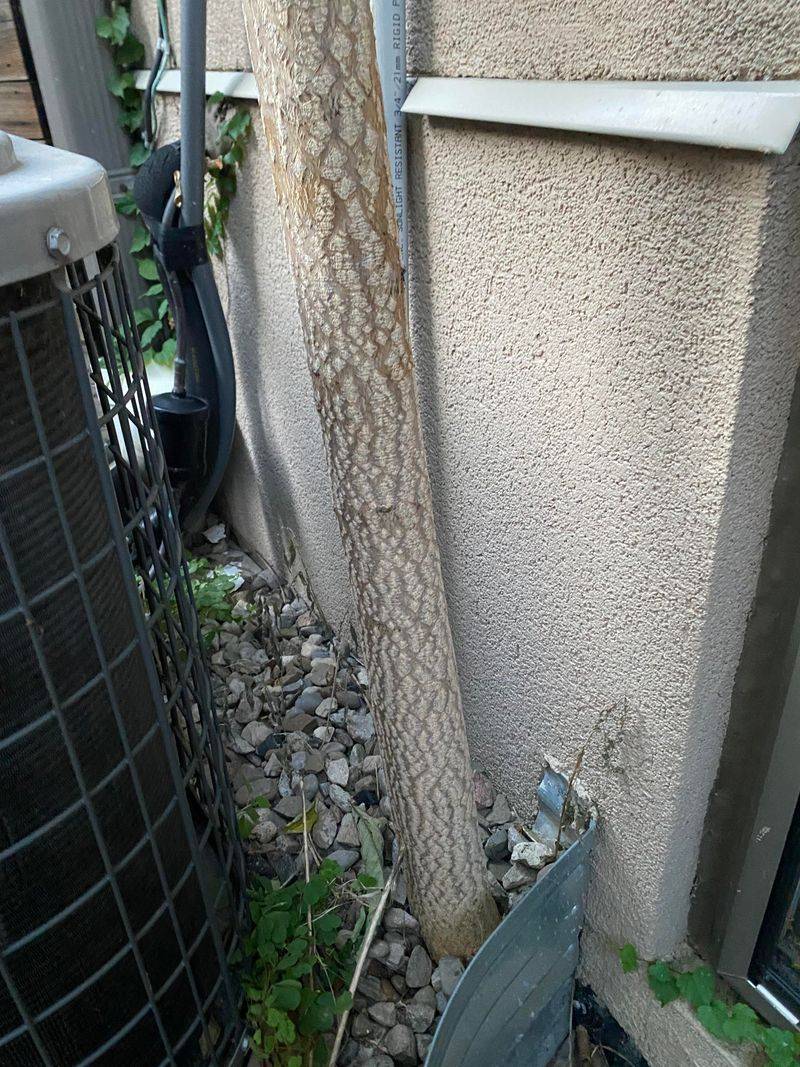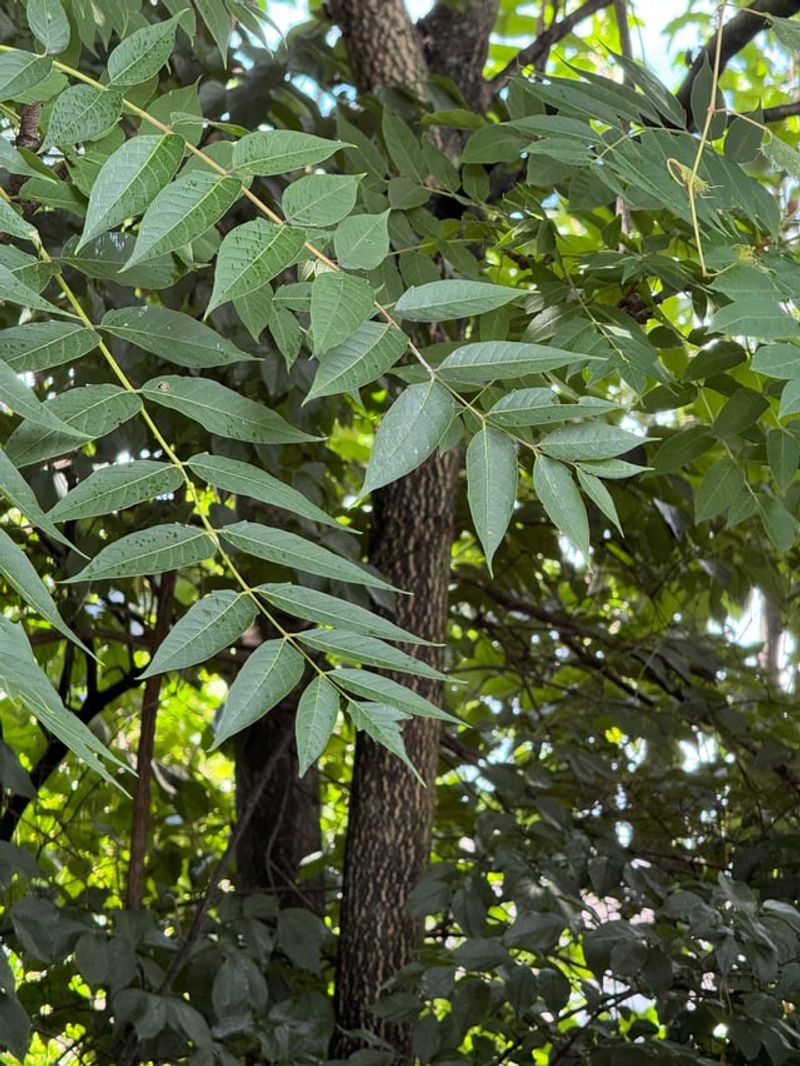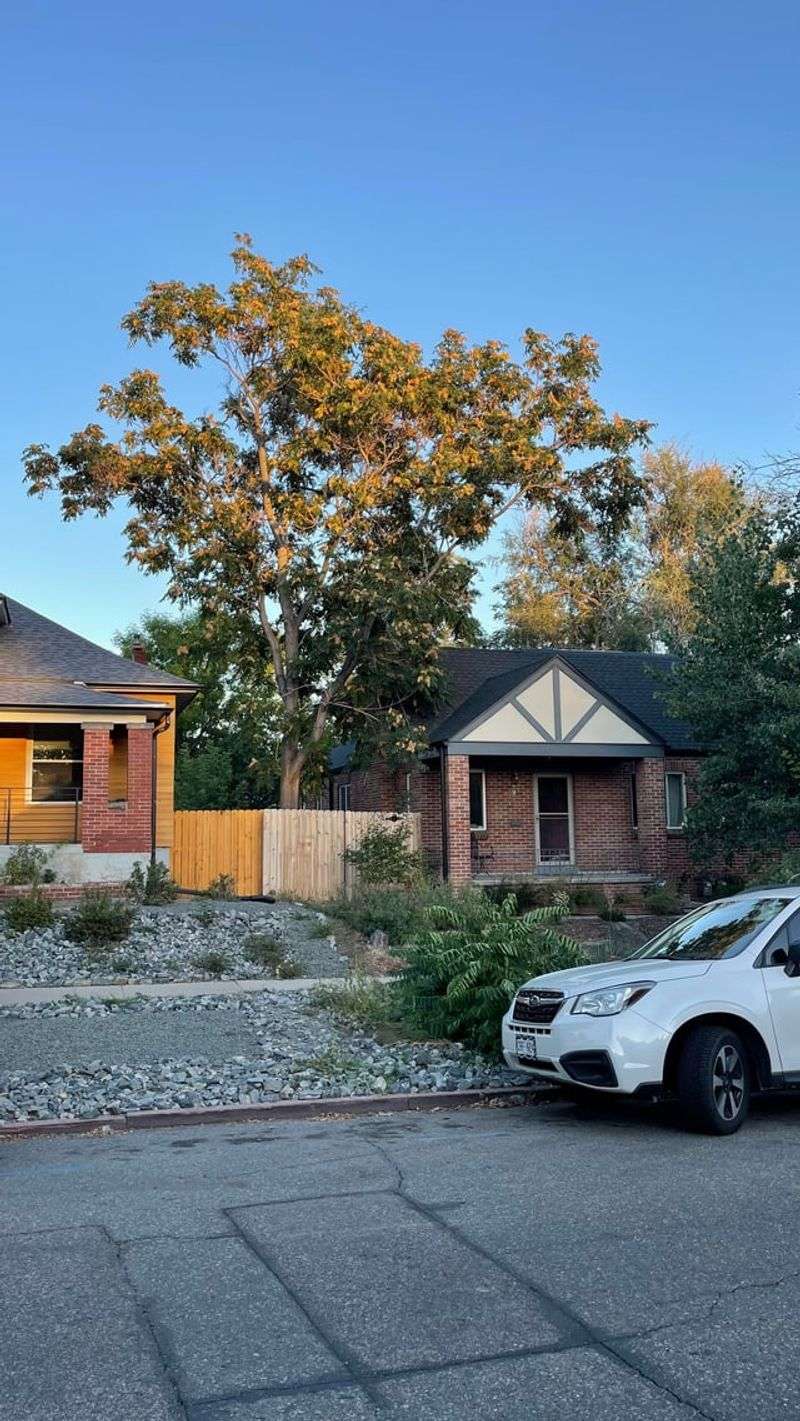It might seem smart to plant Tree-of-Heaven to lure spotted lanternflies, since they’re drawn to it. But that plan quickly backfires—and causes more harm than good.
Tree-of-Heaven is a fast-spreading invasive species that’s already causing trouble across New York. It crowds out native plants, damages ecosystems, and is tough to control once it takes hold.
I’ve found that avoiding this tree altogether is the best move. Understanding why it’s a problem helps protect your yard, your neighborhood, and the environment.
1. Tree-Of-Heaven Spreads Like Wildfire Across Your Property
Once Tree-of-Heaven takes root, it becomes nearly impossible to control. A single tree sends out underground roots that can sprout new trees up to 50 feet away from the parent plant.
Your yard quickly transforms into a forest of these unwanted invaders. They pop up through cracks in pavement, sidewalks, and even building foundations.
Removing one tree triggers even more growth as the root system responds by sending up dozens of new shoots. What starts as one tree becomes a neighborhood nightmare requiring years of effort to eliminate completely.
2. The Tree Releases Chemicals That Kill Other Plants
Tree-of-Heaven practices chemical warfare against its neighbors. The roots and leaves release toxic substances called ailanthone that poison the soil around it.
Native wildflowers, garden vegetables, and other desirable plants struggle to survive or die completely near these trees. Your beautiful garden beds turn into barren zones where nothing else can thrive.
Even after cutting down Tree-of-Heaven, the chemicals remain in the soil for months. This allelopathic effect gives the invader an unfair advantage while destroying plant diversity that local wildlife depends on for survival.
3. It Actually Attracts More Lanternflies To Your Area
Planting Tree-of-Heaven to manage lanternflies is like setting up a five-star hotel for these pests. Spotted lanternflies prefer this tree above almost all others for feeding and laying eggs.
Your tree becomes a beacon that draws lanternflies from blocks away, creating a concentrated infestation. Neighboring properties suffer as the bugs spread from your tree to their gardens and crops.
Instead of solving the lanternfly problem, you magnify it exponentially. Wildlife experts recommend removing Tree-of-Heaven completely rather than using it as a trap tree in residential areas where infestations spread easily.
4. The Smell Is Absolutely Disgusting
Walk past a male Tree-of-Heaven during flowering season and you will instantly regret it. The blooms produce a stench that people describe as rotten peanut butter mixed with cat urine.
Breaking a leaf or twig releases the same foul odor that lingers on your hands and clothes. Imagine having this smell wafting through your windows every spring and summer.
Neighborhoods with many Tree-of-Heaven trees become unpleasant places to spend time outdoors. The offensive odor affects property values and quality of life for everyone living nearby, making outdoor gatherings uncomfortable.
5. Weak Wood Creates Dangerous Falling Hazards
Tree-of-Heaven grows incredibly fast but produces weak, brittle wood that snaps easily. Large branches break off during storms, high winds, or even on calm days without warning.
Falling limbs damage cars, homes, power lines, and can seriously injure people walking beneath them. The trees often grow tall and lean awkwardly, making them prone to toppling completely during severe weather.
Property owners face liability issues when these hazardous trees cause damage or injury. Insurance companies may refuse claims if you knowingly planted or maintained a Tree-of-Heaven despite its documented dangers.
6. It Damages Sidewalks, Foundations, And Underground Utilities
Aggressive roots from Tree-of-Heaven cause expensive infrastructure damage throughout cities. The roots crack concrete sidewalks, heave up pavement, and infiltrate sewer lines looking for water.
Building foundations suffer as roots grow underneath and create pressure that causes cracks and settling. Water pipes and electrical conduits break when roots wrap around them and squeeze tight.
Repair costs run into thousands of dollars for homeowners and municipalities. New York City spends significant taxpayer money annually fixing damage caused by invasive tree roots, with Tree-of-Heaven being a major culprit in infrastructure destruction.
7. Native Wildlife Gets Zero Benefits From This Invasive Species
While native trees support hundreds of insect species that feed local birds, Tree-of-Heaven offers almost nothing to wildlife. Caterpillars that birds depend on to feed their babies cannot eat its toxic leaves.
Few native insects can digest the chemical-laden foliage, creating food deserts for wildlife. Birds avoid nesting in these trees because they provide no food sources nearby for raising young.
Replacing native species with Tree-of-Heaven destroys the ecological web that sustains biodiversity. Every Tree-of-Heaven planted means one less native tree supporting the complex ecosystem that keeps nature balanced and healthy.
8. Removing It Later Costs Way More Than Prevention
Getting rid of established Tree-of-Heaven requires professional help and deep pockets. Simple cutting triggers explosive regrowth, so removal demands herbicide treatment, repeated cutting, and sometimes excavating extensive root systems.
Professional removal services charge hundreds to thousands of dollars depending on tree size and location. The process takes multiple years of monitoring and follow-up treatments to prevent resprouting.
Prevention costs nothing compared to removal expenses. Choosing native alternatives from the start saves money, time, and frustration while protecting your property and community from this persistent invader that refuses to leave quietly.

